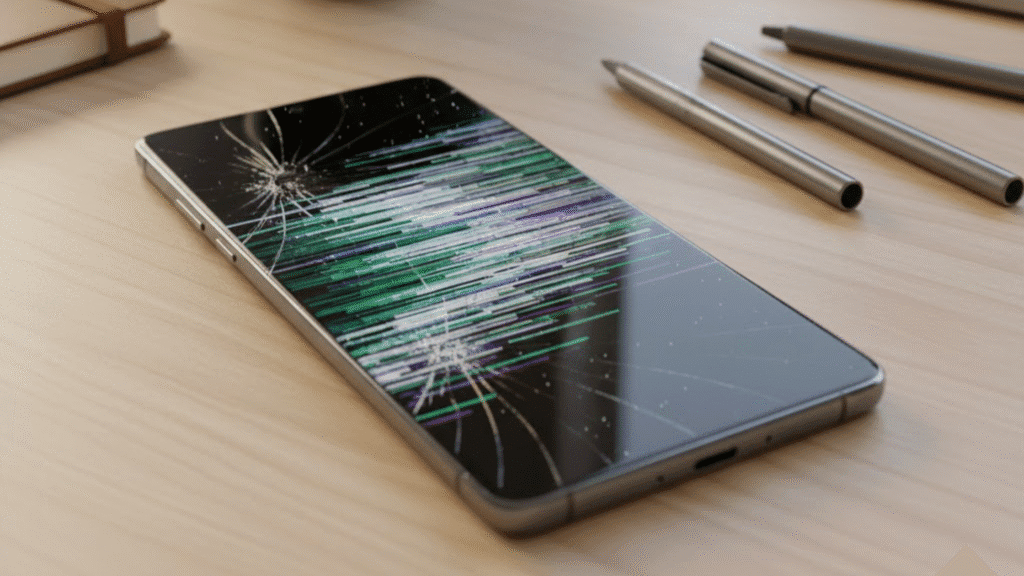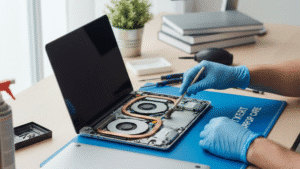If your Galaxy phone screen suddenly stops responding, it can be extremely frustrating, especially if you rely on your device for work, communication, or entertainment. From minor software glitches to accidental physical damage, there are many reasons a touchscreen may fail to respond. Understanding the root cause is the first step toward resolving the problem efficiently. Many users rush to seek Samsung phone repair services without knowing whether the issue is minor or serious, leading to unnecessary costs. By identifying the problem early and applying practical solutions, you can often restore screen responsiveness without hassle.
Common Reasons Your Galaxy Screen Stops Responding
A screen that freezes or becomes unresponsive can have multiple causes. Knowing what could be affecting your phone helps you decide whether a simple fix will do the trick or if professional help is required.
Software Glitches and Freezes
Minor bugs in your phone’s operating system or conflicting apps can often be the reason behind an unresponsive screen. These glitches may arise after a recent update or installation of new apps. Performing a soft reset or restarting your device can usually clear these issues. Regularly checking for app updates and monitoring recent changes in your phone’s software environment can prevent recurring glitches.
Physical Damage or Screen Malfunction
Accidental drops, excessive pressure on the screen, or exposure to water can damage the touch layer. Even small cracks or hairline scratches can interfere with screen responsiveness. In such cases, a professional assessment is often necessary. Using protective cases, tempered glass, and avoiding placing your phone in situations where it may get damaged can help reduce the likelihood of screen issues.
Overheating or Performance Issues
Phones that are running multiple apps at the same time or experiencing overheating may temporarily cause the screen to freeze. Allowing the device to cool down and closing unnecessary background apps can restore normal function. Regular maintenance, such as clearing the cache and monitoring performance, can prevent such problems from becoming chronic.
Screen Calibration or Sensor Problems
Sometimes, unresponsiveness stems from a miscalibrated touch screen or faulty sensors. Certain apps can also interfere with touch recognition, causing lag or complete unresponsiveness. Calibrating the screen settings or uninstalling suspicious apps often resolves these issues without requiring physical repairs.
Easy Solutions to Restore Screen Responsiveness
Not all screen issues require a complete replacement or professional intervention. Many problems can be solved with simple troubleshooting steps that anyone can try at home. Cleaning the screen, checking for app conflicts, or performing a soft reset can restore responsiveness in many cases.
Restart and Safe Mode Check
Restarting your Galaxy phone can eliminate temporary software glitches. Booting into Safe Mode is a helpful way to determine whether a third-party app is causing the unresponsiveness. In Safe Mode, only system apps are allowed to run, so if your screen works correctly in this mode, you’ll know the issue is caused by an app. Identifying the culprit app and uninstalling it often resolves the problem without requiring professional repair.
Cleaning and Inspecting the Screen
Sometimes, the issue is as simple as dirt, dust, or moisture interfering with the touch sensors. Using a clean microfiber cloth to gently wipe the screen can help. Compressed air can be used around the edges of the phone to remove any trapped debris. Regularly inspecting your device for scratches, cracks, or water damage can indicate whether professional replacement may be needed.
Professional Assistance for Persistent Issues
If basic troubleshooting fails, seeking expert help is the safest option. Consulting a professional ensures your device is diagnosed accurately and avoids causing further damage. Experienced technicians can provide smartphone repair services, including component replacement and hardware diagnostics, restoring your phone’s touch functionality while maintaining its other features.
Protecting Your Device from Future Screen Problems
Preventing screen problems is always easier than fixing them. Simple habits, like using a screen protector, keeping your phone clean, avoiding drops or water exposure, and updating software regularly, can significantly extend the life of your Galaxy screen. Consistent care helps maintain smooth performance and reduces the risk of unresponsiveness.
Use Protective Accessories
Screen protectors, sturdy cases, and avoiding extreme environments can prevent physical damage. Even minor impacts or accidental drops can affect the responsiveness of your touch screen, so investing in protective accessories is a smart move.
Regular Software Updates
Keeping your Galaxy phone’s operating system and apps updated ensures that any known bugs are patched. Updates often improve performance and prevent software-related unresponsiveness.
Safe Charging and Temperature Management
Overheating can affect both the battery and the screen’s responsiveness. Avoid using your phone while charging at high temperatures, and keep it out of direct sunlight or hot environments for extended periods.
Data Recovery in Case of Severe Damage
In cases where screen problems coincide with potential data loss, professional data recovery services can help retrieve important files. Acting quickly is crucial, as attempting DIY solutions without expertise can sometimes overwrite or corrupt data. Services that specialise in mobile data retrieval can safely extract your contacts, photos, and other critical information, ensuring you don’t lose anything valuable even if the screen is non-functional.
Choosing the Right Service Provider
When selecting a repair service, look for technicians with positive reviews and proven experience. Certified specialists, such as a Samsung phone expert in Adelaide, provide genuine replacement parts and ensure that repairs are completed reliably. Choosing the right provider reduces the risk of recurring issues and gives you confidence that your device is in expert hands.
FAQs
Why is my Galaxy screen unresponsive even after a restart?
Software conflicts or hardware faults could be causing the problem. Booting into Safe Mode or consulting a professional technician often identifies the issue.
Can I fix screen responsiveness issues myself?
Minor software glitches and app conflicts can often be addressed at home. Physical damage, however, generally requires professional repair.
How much does a Galaxy screen repair usually cost?
Costs vary depending on the model and the extent of the damage. Always opt for verified service providers for the best quality repair and peace of mind.
Will my data be safe during a screen repair?
Most professional services take precautions to protect your data. However, it’s always recommended to back up your device before sending it in for repair.
Conclusion
A non-responsive Galaxy screen doesn’t have to cause major disruption. Many issues can be solved with simple troubleshooting steps, while more persistent problems can be addressed through professional smartphone repair. By taking preventive measures, such as using protective accessories, regularly updating software, and consulting trusted experts when necessary, you can keep your device functioning reliably.
For dependable service and expert guidance, Digimob provides reliable support to restore your phone’s screen responsiveness and ensure your device stays in optimal condition.



